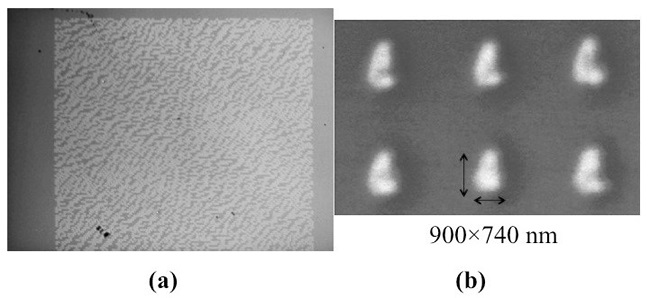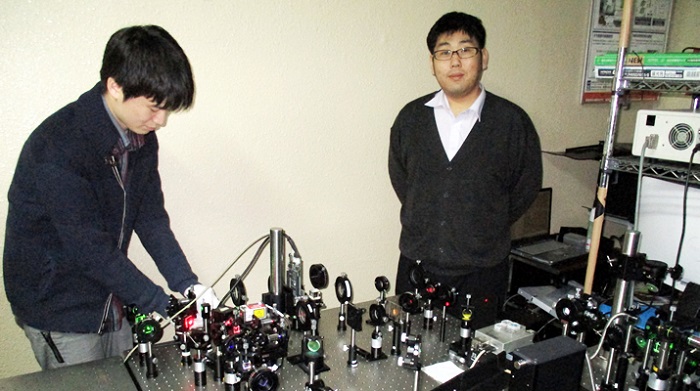19 Apr. 2016
By Hiroyuki Takagi
Toyohashi Tech researchers have developed a wide-view three- dimensional (3D) holographic display composed of nano-magnetic pixels. This 3D display, with 1-μm-pitch pixels, can show holographic images at viewing angle of over 30°. This display is an attractive option for visualizing 3D objects with a smooth motion parallax and without using special glasses.
Conventional 3D displays, such as stereo displays with glasses and glass-free autostereoscopic displays, show two-dimensional images for each eye. Therefore, users experience incongruity and eyestrain owing to these pseudo-3D images. A holographic display produces an exact copy of the wave front of scattered light from an object, and hence, a realistic 3D display is expected. Holographic displays can reconstruct realistic 3D images, thereby eliminating the need for special glasses.
However, construction of holographic displays is difficult, as nano-sized pixels are required for reconstructing 3D images with a wide viewing-angle. Conventional holographic displays have a viewing angle of <3 and a pixel pitch of 10–100 μm.
Researchers at Toyohashi Tech have recently developed wide-viewing 3D holographic displays composed of nano-magnetic pixels.

An image composed of nano-magnetic pixels. (a) A 256×256-pixel 1µm-pitch image obtained via polarization microscopy and (b) a 3×2-pixel 2.5-µm-pitch image obtained via magnetic force microscopy.
These displays are driven by thermomagnetic recordings, and wide viewing-angles are achieved through the use of in-house-developed magneto-optic spatial light modulators (MOSLMs) composed of nano-sized pixels.
According to Associate Prof. Takagi, “The advantages of this approach are that the focused spot of a laser defines the pixel size, the MOSLM does not require special current or voltage drivelines, and the switching speed is about 10 nsec/pixel that is enough for real-time display. Therefore, the MOSLM can represent 3D movie because display media is a rewritable magnetic material. In addition, the magnetic hologram is stored for magnetic materials semi permanently. The viewing angle depends on pixel pitch size. In this study, we adjusted to the pixel pitch size of 1 μm after obtaining the pixel size of 1 μm.”
This confirms, as previously stated, that a 3D display with 1-μm-pitch pixels can display holographic images at a viewing angles of over 30. Therefore, this display constitutes an attractive option for visualizing 3D objects with a smooth motion parallax and without special glasses.
This work was supported by JSPS KAKENHI Grant Numbers 26220902, 25820124, 15J05710, and SCOPE (152106003) T.G. acknowledges JSPS KAKENHI No. 26706009, and JST PRESTO. Reference: K. Nakamura, H. Takagi, T. Goto, P. B. Lim, H. Horimai, H. Yoshikawa, V. M. Bove and M. Inoue, “Improvement of diffraction efficiency of three-dimensional magneto-optic spatial light modulator with magnetophotonic crystal”, Appl. Phys. Lett., 108, 022404 (2016).













